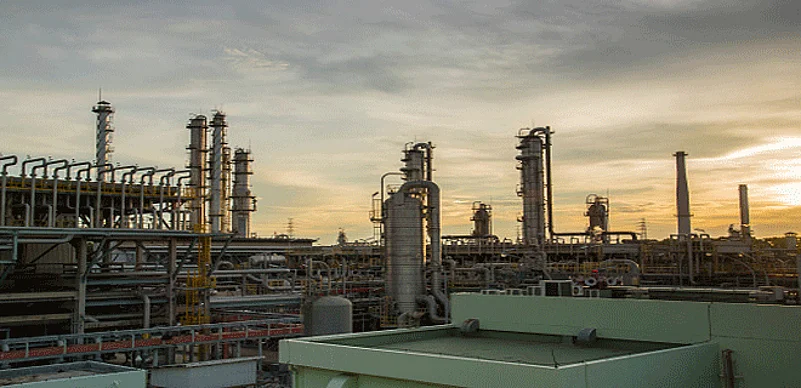Gujarat being the petrochemical hub of India, Government of Gujarat has undertaken many initiatives with a vision to harness the potential of renewable sources of energy as well as the oil and gas sector. The key driver of growth and development of any society is energy. India is the third largest energy consumer in the world accounting for 35 percent of the global energy consumption.
In line with this vision, Gujarat State Petrochemicals Corporation Limited was incorporated by Government of Gujarat in 1979. It is a group of oil and gas exploration, production, and distribution companies based in Gujarat. It has emerged as the only oil and gas conglomerate to be promoted by a state government of India with the Government of Gujarat holding approximately 95 per cent equity stake.
Advertisement
The GSPC Group, which has twelve companies and institutions under its umbrella, has established itself as one of the largest oil and gas exploration and production (E&P) entities with a commanding presence across the entire hydrocarbon value chain. The group employs innovation and new technologies to constantly better its operations in both upstream and downstream segments.
Gujarat State Petronet (GSPL), a group entity of the GSPC group, is a Gujarat focused natural gas transmission firm operating on an open access basis. It owns approximately 2,180 km natural gas pipeline transporting 21 million standard cubic feet per day (mmscmd) of gas. GSPL owns stake in two city gas distribution firms – Sabarmati Gas and Gujarat Gas. The firm holds 25 per cent stake in these two city gas geographies, which accounts for one‐third of its volume off‐take. It is the second largest gas pipeline player in the country after GAIL.
Advertisement
GSPL had participated and won bids to spread geographically. The natural gas firm had put up three major pipelines outside Gujarat in Mallavaram, Andhra Pradesh to Bhilwara, Rajasthan, Mehsana, Gujarat to Bhatinda, Punjab, and Bhatinda to Srinagar.
For the April-June’17 quarter GSPL witnessed robust EBITDA of Rs 280 crore jumping 19 per cent year over year (YoY). EBITDA for the quarter was 14 per cent ahead of its estimates. Moreover, higher‐than‐expected taxes meant profit after tax (PAT) came only 12 per cent ahead.
EBITDA beat on better volumes
EBITDA was driven by the surge in volumes. After a dismal fourth quarter of fiscal 2017, volumes improved 7 per cent YoY on better off‐take from refining and power customers. Volumes have recovered sharply from supply disruption at Petronet LNG Ltd (PLNG)’s Dahej terminal seen in last quarter of the financial year’17.
Volume momentum continues with quarter to date volumes up by four per cent at 28mmscmd. Going forward, the short‐term prospects are expected to be robust with higher off‐take by Reliance Industries Ltd (RIL) from the second quarter of 2018 with 5mmscmd over 6 months.
The parent group of the company, Gujarat State Petroleum Corp. (GSPC) is commissioning of Mundra LNG terminal by the end of the current financial year 2018. GSPL will continue to benefit from recent expansion of PLNG. The parent group GSPC has already booked 2.25 million metric tonnes.
Hiked tariffs
During the quarter, tariffs have been robust at Rs 1.16/scm, with a hike of 8 per cent YoY and improved due to better sales mix. The Petroleum and Natural Gas Regulatory Board (PNGRB) is currently considering GSPL’s demand of 124 per cent tariff hike, which seems excessive. Tariff order is expected shortly with new members inducted into PNGRB.
Advertisement
The company’s transmission tariff is also likely to increase retrospectively as recently, Appelate Tribunal of Electricity has given a favorable verdict to GSPL against PNGRB's tariff order.
On the basis of sensitivity analysis, it is indicated that the potential tariff hike by 20 per cent, 40 per cent and 50 per cent will strengthen the expected earnings of 2019 by 10 per cent, 34 per cent and 46 per cent, respectively. For the financial year 2019, afavourable tariff order is expected, although 12 per cent tariff hike is estimated for 2019.
Investment in LNG terminals
Gujarat State Petronet is acquiring 11 per cent stake in Swan Energy, a manufacturer and marketer of cotton and polyester textile products in India. The project cost is of Rs 4,000 crore with a capacity of five million tons per annum floating LNG terminal at Jafrabad, Gujarat on the West coast.
Advertisement
Valuations
GSPL faces potential tailwinds, with its gas transmission volumes poised to rise on top priority allocation to city gas distribution. Its short term outlook looks robust.
Commissioning of RIL’s petcoke gasification unit in 2018 remains an overhang on volumes and raises the estimates of volume for 2018 by 5 per cent on higher off‐take by RIL. However, due to demand from city gas and higher off‐take from ONGC Petro additions Limited (OPAL), power customers will likely offset the volumes lost.
For 2018 and 2019 fiscal, the growth of earnings per share (EPS) is estimated at 26 per cent and 6 per cent. At the current market price of Rs 180, the stock trades at 15 times its expected earnings of 2019
Advertisement
Key Risks
The major risk for GSPL is owing to limited availability of gas; the company is likely to suffer from lower capacity utilisation. The company’s profitability and thus its return on equity (ROE) can be majorly impacted due to cut in tariffs. Any reduction in the transmission tariffs can lead to a downward revision in earnings. Additionally, the three new pipelines can slowdown due to land availability issues, which will lead to losses.















 Just one email a week
Just one email a week